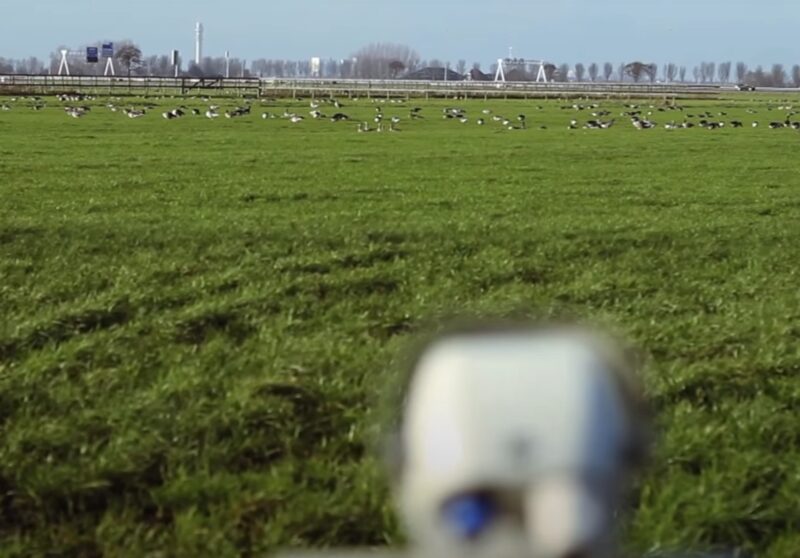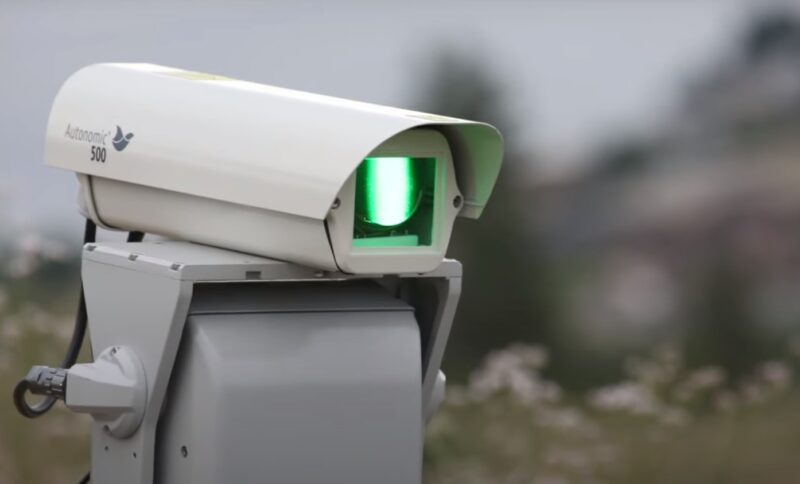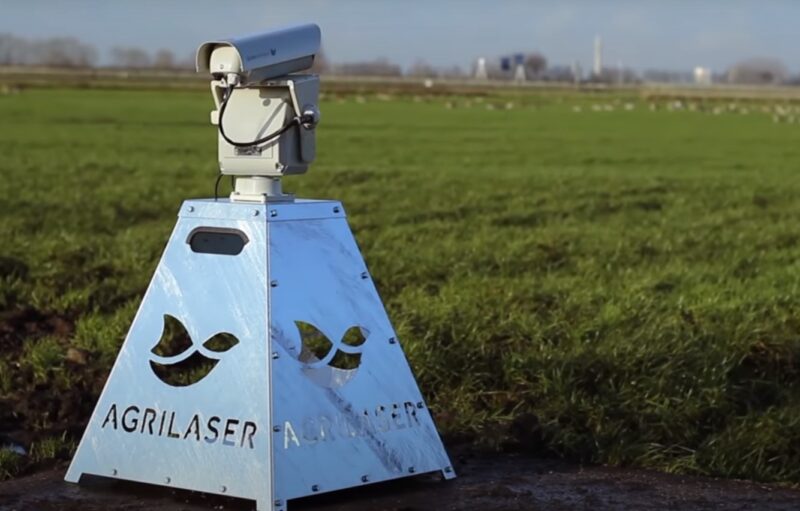In the constant battle against crop damage caused by birds, farmers have sought innovative solutions. One such modern solution is the laser scarecrow. This technology claims to offer an effective, humane, and environmentally friendly way to deter birds. But do laser scarecrows really work?
The answer is a resounding “yes,” and here’s why: scientific studies and field trials have demonstrated their effectiveness in various agricultural settings. This article delves into the world of laser scarecrows, exploring how they operate, their efficacy, and their impact on both agriculture and wildlife.
Bird-Related Crop Damage

Birds, integral to our ecosystem, can also be a significant nuisance for farmers. Crops such as grains, fruits, and vegetables are often at risk of severe damage from various bird species. Traditional methods like scarecrows, noise cannons, and netting have shown limited effectiveness and can inadvertently harm birds and the environment.
These methods can also be labor-intensive and costly over time. Furthermore, birds quickly adapt to static scare tactics, diminishing their effectiveness. Hence, the agricultural community is in dire need of a sustainable, effective solution to mitigate this issue without causing ecological harm.
Laser scarecrows have emerged as a novel approach to this age-old problem. Utilizing laser beams, these devices scare birds away without causing them physical harm, providing a humane and environmentally friendly solution.
The technology leverages birds’ natural aversion to sudden changes in light. These systems can be automated and programmed to cover a specific area, ensuring round-the-clock protection, which is particularly crucial during critical growing and harvesting periods.
Moreover, laser scarecrows can be customized in intensity and pattern, making them adaptable for different types of crops and bird species. This adaptability and automation present a modern solution that is both effective and efficient for farmers.
How Do Laser Scarecrows Work?

Laser scarecrows emit a beam of light that birds perceive as a physical threat, prompting them to fly away. The light, usually green, is chosen based on research indicating this color’s effectiveness in deterring birds. These systems are designed to sweep an area with random patterns, preventing birds from getting accustomed to the light.
The randomness of the pattern is key to its effectiveness, as predictability can lead birds to overcome their initial fear. Additionally, the lasers are often programmed to operate during specific times, typically dawn and dusk, when birds are most active.
This targeted approach ensures maximum effectiveness while minimizing energy consumption.
Research and Field Trials
Numerous studies have tested the effectiveness of laser scarecrows. For example, a study conducted by the University of Rhode Island found that laser-based systems reduced bird presence in vineyards by up to 95%. Similar results have been observed in other crops like blueberries and cherries.
These studies not only demonstrate the effectiveness of lasers in reducing bird presence but also highlight their potential to increase crop yields and reduce economic losses. Importantly, the research also indicates that the lasers do not cause long-term harm to bird populations, ensuring an ethical approach to pest control.
As such, laser scarecrows are increasingly recognized as a viable and responsible solution for modern agriculture.
The Impact on Agriculture

The use of laser scarecrows in agriculture has several benefits:
- Increased Crop Yield: Reducing bird-related damage directly translates to higher yields. This increase in yield is vital for farmers, as it not only enhances their profitability but also contributes to food security. Furthermore, consistent crop protection ensures quality produce, which is crucial for maintaining market standards and consumer satisfaction.
- Cost-Effectiveness: After the initial investment, the running costs of laser scarecrows are relatively low. This cost-effectiveness is a game-changer for farmers, especially in comparison to the recurrent expenses of traditional methods like netting or chemical repellents. Moreover, the durability and low maintenance requirements of laser systems further reduce long-term costs.
- Environmentally Friendly: Unlike chemical repellents, lasers do not harm the environment. This feature is particularly important in the current context of environmental sustainability. It helps farmers meet increasingly stringent environmental regulations and appeals to eco-conscious consumers. Additionally, the absence of chemicals means there’s no risk of contaminating crops or surrounding ecosystems.
- Humane Bird Deterrent: Lasers do not harm birds, offering a humane solution. This aspect is essential for ethical farming practices and aligns with animal welfare standards. It also avoids the potential negative publicity associated with harming wildlife, which is increasingly important in a socially conscious market. Furthermore, this humane approach ensures no disruption of local wildlife populations.
The Impact on Wildlife

The humane aspect of laser scarecrows is significant. They provide a bird-friendly way to protect crops, aligning with wildlife conservation principles. By not harming birds, they maintain the ecological balance while protecting agricultural interests.
This balance is crucial for preserving biodiversity, as birds play essential roles in ecosystems, such as seed dispersal and pest control. The non-lethal nature of laser scarecrows ensures that these ecological roles are not disrupted.
Additionally, by avoiding the harm that traditional bird deterrents can cause, laser scarecrows contribute to the broader goals of wildlife conservation, supporting the health and diversity of bird populations.
This approach is particularly important in areas where agriculture borders natural habitats, ensuring that farming practices do not adversely impact native wildlife.
FAQs
Can laser scarecrows be used in all types of weather conditions?
They are generally designed to withstand various weather conditions, including rain and moderate winds. However, their effectiveness can be reduced in foggy conditions or heavy rainfall, as these conditions can diffuse the laser beam.
Are there any safety concerns for humans or animals other than birds?
Safety is a crucial consideration. The lasers are designed to be harmless to humans and other animals when used correctly. However, it’s important to ensure that the laser beams are set up to avoid eye-level exposure to humans or domestic animals.
How do laser scarecrows affect nocturnal birds or wildlife?
Laser scarecrows can be effective at night, which is beneficial for deterring nocturnal birds. However, they are usually programmed to minimize disturbance to nocturnal wildlife, often by reducing operational hours or intensity during nighttime.
Can the laser scarecrows be programmed for specific bird species?
Yes, laser scarecrows can often be programmed or adjusted to target specific bird species. This is done by altering the pattern, speed, and area of the laser beam, which can be more effective for certain birds based on their behavior and vision.
How long do laser scarecrows typically last before requiring maintenance or replacement?
The lifespan of a laser scarecrow varies depending on the model and usage, but they typically last several years before requiring significant maintenance. Regular minor maintenance, like cleaning lenses, can help prolong their effectiveness and lifespan.
Are there any legal restrictions or permits required for using laser scarecrows?
The regulations regarding laser scarecrows can vary by region and country. In some areas, there may be restrictions on laser power or usage, especially near airports or in urban areas. It’s important for users to check local wildlife protection laws and any laser usage regulations before installation.
Summary
Laser scarecrows represent a successful fusion of technology and agriculture, addressing the problem of bird-related crop damage effectively and sustainably. Their ability to deter birds humanely and efficiently while being environmentally friendly positions them as an excellent solution for modern agriculture.
Related Posts:
- Preparing for Laser Hair Removal: Essential Tips for…
- How to Make Millions with WoW's Most Efficient Gold…
- Unlocking the Most Efficient Gold Farming Method in…
- Online Pokies Unveiled: Are They a Game of Skill or…
- Is There a Trick to Online Pokies, or Are They…
- Aston Villa's League Ambitions: Can They Win the…














